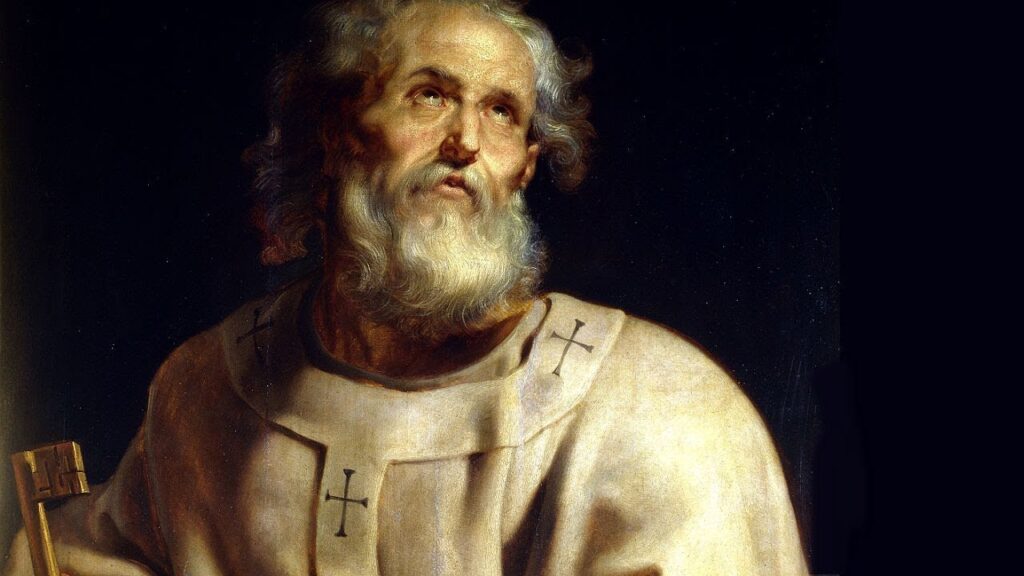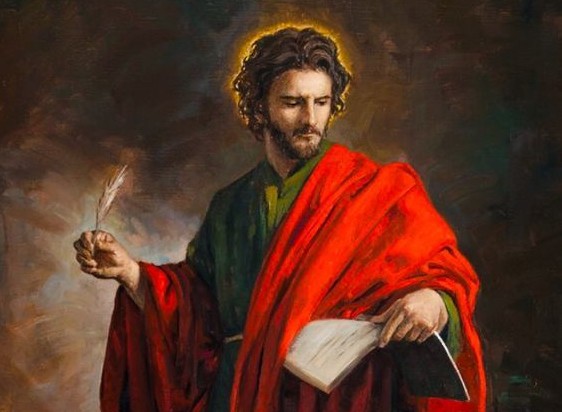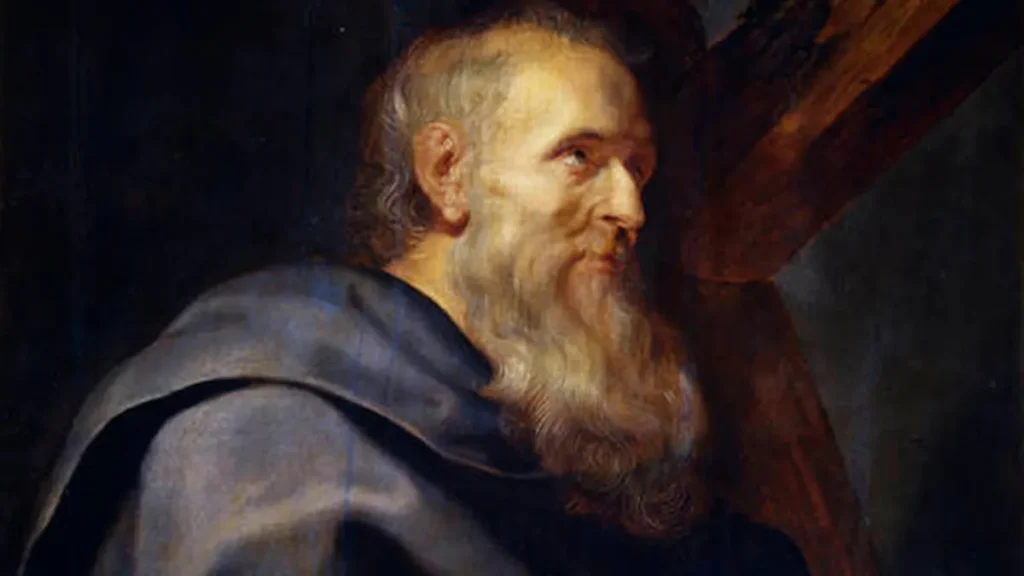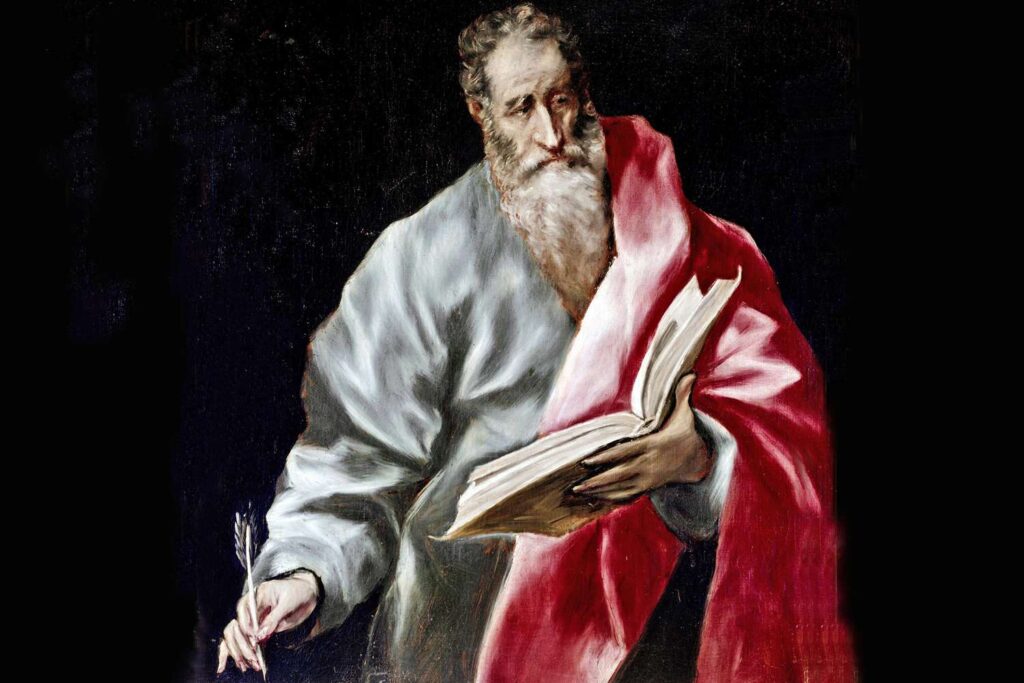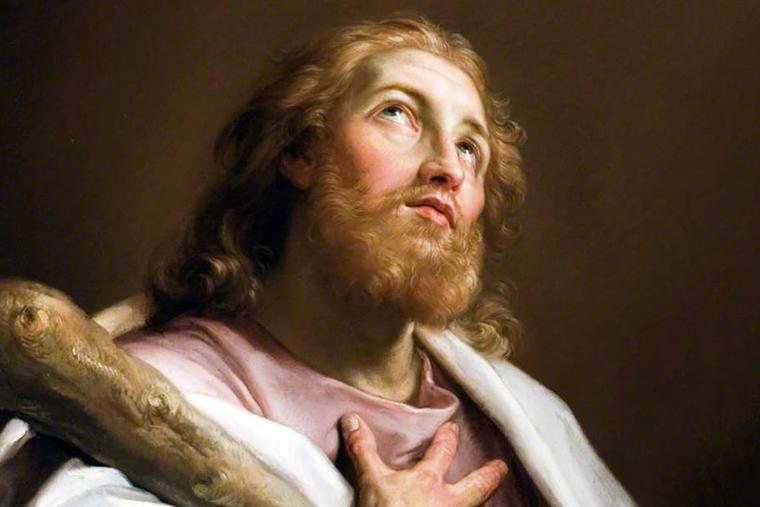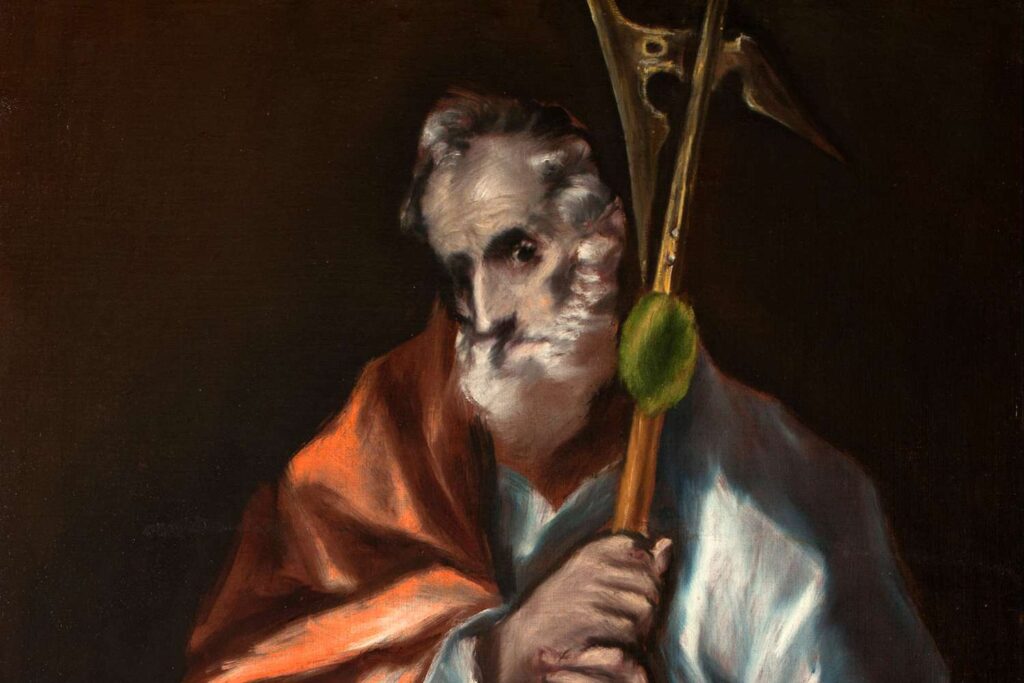The Twelve Apostles are central figures in Christianity, chosen by Jesus Christ himself during his earthly ministry to spread his teachings and lead the early church.
Understanding who these men were, their backgrounds, and their contributions to the spread of Christianity not only provides insight into the religious context of the time but also enriches the historical narrative of one of the world’s major religions. This article delves into each Apostle’s identity and their roles within the Christian faith.
1. Simon Peter
Simon Peter, one of the most prominent of the twelve apostles of Jesus Christ, is a figure of immense significance in Christian tradition. Known for his fiery personality and deep loyalty, Peter’s life story offers a blend of fervor, faith, and moments of human frailty, making him a relatable figure for many believers.
Originally named Simon, he was a fisherman by trade in the Sea of Galilee, where Jesus called him to be a “fisher of men.” Jesus gave him the name Peter, derived from the Greek word “Petros,” meaning “rock,” signifying the foundational role Peter would play in the early church.
Peter’s journey with Jesus is marked by several pivotal moments. One of the most famous is his confession of Jesus as the Christ, the Son of the living God, to which Jesus responded by affirming that Peter would be the rock upon which His church would be built. This event underscores Peter’s importance as a spiritual leader.
However, Peter is also known for his weaknesses, notably his denial of Jesus thrice before the rooster crowed, which he did after Jesus’s arrest, despite his earlier proclamation that he would never forsake Him. This episode paints Peter as a deeply human figure, embodying the struggles of faith and repentance.
After the resurrection of Jesus, Peter took on a central role in the early Christian church. He is credited with several key moments in the Acts of the Apostles, such as his bold preaching on the Day of Pentecost, which led to the conversion of about three thousand people. His leadership helped shape the spread of Christianity in its early years, particularly among Jews.
Peter’s later life, as per Christian tradition, led him to Rome, where he was eventually martyred under the reign of Emperor Nero. He is said to have been crucified upside down at his own request, as he did not feel worthy to die in the same manner as Jesus.
Peter’s legacy is profound, influencing various aspects of Christian theology and ecclesiology. He is often regarded as the first pope by the Roman Catholic Church, and his writings, two epistles in the New Testament, are pivotal for their theological insights and pastoral tone.
2. Andrew
Apostle Andrew, often overshadowed by his more famous brother, Simon Peter, is a significant figure in Christian history in his own right. Known as one of the first followers of Jesus Christ, Andrew’s story is marked by his role as a connector and missionary.
Andrew, like Peter, was a fisherman from Bethsaida on the Sea of Galilee. He initially was a disciple of John the Baptist, and it was John who introduced Andrew to Jesus. According to the Gospel of John, Andrew was the first of the disciples to follow Jesus, and he immediately recognized Jesus’ significance. One of his first acts after meeting Jesus was to find his brother Simon and bring him to Jesus, demonstrating Andrew’s role as a bridge-builder in the early Christian community.
Andrew’s interactions with Jesus include a notable moment during the feeding of the 5,000. It was Andrew who pointed out the boy with five barley loaves and two fish, which Jesus then miraculously multiplied. This incident highlights Andrew’s attentiveness and his involvement in facilitating one of Jesus’ most famous miracles.
In the Gospel accounts, Andrew is somewhat in the background, typically listed among the first four disciples but without the prominence of Peter or John. However, his presence at key moments, such as the Last Supper, underscores his importance as a close associate of Jesus.
After Jesus’ resurrection and ascension, Andrew is believed to have spread the gospel in various parts of Eastern Europe and Asia Minor. According to tradition, Andrew preached in regions like Greece, where he is said to have been martyred by crucifixion at Patras. Legend states that he was crucified on an X-shaped cross, now commonly known as Saint Andrew’s Cross, as he deemed himself unworthy to be crucified on the same type of cross as Jesus.
Saint Andrew is venerated in several Christian denominations. He is the patron saint of Scotland, Russia, and Greece, reflecting his significant impact on Christian tradition in these regions. The national flag of Scotland, featuring Saint Andrew’s Cross, is a testament to his lasting legacy.
Andrew’s role as a pivotal figure in the early spread of Christianity and his connection to key moments in Jesus’ ministry makes him an essential figure in the apostolic history. His life exemplifies the themes of humility, brotherhood, and missionary zeal, marking him as a foundational character in the Christian narrative.
3. James the Greater
Apostle James the Greater, often distinguished from James the Lesser by his closer relationship with Jesus and his earlier call to discipleship, is a robust figure in the annals of Christian history. His epithet “the Greater” simply refers to either his greater stature or possibly his earlier call among the two Jameses in the circle of the Twelve Apostles.
James the Greater was the son of Zebedee and Salome and the brother of John, another of the Twelve Apostles. This familial pairing is frequently mentioned in the New Testament, underscoring their significant roles. James and John were fishermen by trade before Jesus called them to become “fishers of men.” Their lives took a dramatic turn when they left their nets and father by the Sea of Galilee to follow Christ.
James is notably part of Jesus’ inner circle, along with Peter and John. This privileged trio is present at some of the most crucial events in Jesus’ ministry, including the Transfiguration and the Agony in the Garden of Gethsemane. During the Transfiguration, James, along with Peter and John, witnessed Jesus’ radiant transformation and His conversation with Moses and Elijah, marking a pivotal moment in their understanding of Jesus’ divine nature.
James’ temperament, along with his brother John’s, earned them the nickname “Boanerges,” meaning “sons of thunder,” a moniker bestowed by Jesus Himself. This nickname likely reflects their fiery zeal and impetuous spirit, which is vividly illustrated in an incident where James and John asked Jesus if they should call down fire from heaven to consume a Samaritan village that had rejected them. Jesus rebuked them for this vengeful attitude, highlighting a learning curve in their spiritual development.
James’ ministry, post-resurrection, is less documented than that of Peter or Paul. However, his martyrdom is significant as he is considered the first apostle to be martyred and the only one whose death is recorded in the New Testament. According to the Acts of the Apostles, James was executed by the sword under the orders of King Herod Agrippa I around 44 AD, a stark testament to the dangers faced by the early Christian leaders.
The legacy of James the Greater extends far beyond his martyrdom. He is venerated as the patron saint of Spain, and legend holds that his remains are enshrined at Santiago de Compostela, one of Christianity’s most significant pilgrimage sites. This connection has immortalized James in the cultural and spiritual history of Spain, inspiring the famous Camino de Santiago (Way of St. James) pilgrimage that draws thousands of pilgrims yearly.
James the Greater’s story embodies the zeal, transformation, and ultimate sacrifice that mark the lives of those who come close to Jesus. His journey from a fisherman to a foundational figure in Christianity exemplifies the transformative power of faith and commitment.
4. John
Apostle John stands out as a central figure in the New Testament and Christian theology. Known for his profound contributions to the Bible, including the Gospel of John, three epistles, and the Book of Revelation, John’s writings have left a lasting impact on Christian doctrine and the understanding of divine love and eternal life.
John, along with his brother James, was a son of Zebedee, a fisherman, and was likely the youngest of Jesus’ original Twelve Apostles. He was also part of Jesus’ inner circle, along with Peter and James, which allowed him unique access to events such as the Transfiguration and the Agony in the Garden of Gethsemane.
John’s close relationship with Jesus is highlighted in his gospel, where he refers to himself as “the disciple whom Jesus loved.” This phrase not only underscores a special bond but also conveys a deep sense of humility and beloved status. It is John who reclines next to Jesus during the Last Supper and to whom Jesus entrusts the care of His mother, Mary, from the cross, further illustrating his pivotal role among the disciples.
The Gospel of John is distinct from the synoptic gospels (Matthew, Mark, and Luke), offering a more introspective and theological perspective on the life of Christ. It emphasizes themes of light, truth, and love, providing profound insights into Jesus’ nature and mission. John’s writings are particularly noted for their deep theological content and have been fundamental in shaping Christian eschatology and Christology.
After the resurrection and ascension of Jesus, John played a significant role in the early church. Church tradition holds that John later lived in Ephesus, where he became a pillar of the local Christian community. He is also traditionally associated with the exile on the island of Patmos, where he is said to have written the Book of Revelation, a prophetic text that offers a vision of the end times, the final battle between good and evil, and the ultimate triumph of God.
John’s death is unique among the apostles as he is believed to have died of natural causes in Ephesus around the end of the first century. This peaceful end contrasts sharply with the martyrdom faced by many of his fellow apostles.
Venerated as a saint across various Christian denominations, John’s legacy is particularly celebrated for his deep, introspective writings that encourage believers to love one another and live in the light of truth. His emphasis on the personal relationship with Jesus Christ and the love that defines that relationship continues to influence Christian thought and practice today.
5. Philip
Apostle Philip is one of the lesser-known yet intriguing figures among Jesus Christ’s original twelve apostles. Originating from Bethsaida, the same town as Peter and Andrew, Philip plays a role in the New Testament that highlights his character as both a seeker and a sharer of faith.
Philip’s introduction to Jesus is direct and personal, with Jesus approaching him with the simple invitation, “Follow me” (John 1:43). This straightforward recruitment underscores a significant theme in Philip’s story—his readiness to respond to spiritual callings. Immediately after meeting Jesus, Philip finds Nathanael and tells him about Jesus, asserting that they have found the one Moses and the prophets wrote about, showcasing his knowledge of Jewish scriptures and his enthusiasm for evangelism.
Philip’s interactions with Jesus provide insight into his personality. In the Gospel of John, during the feeding of the 5,000, it is Philip whom Jesus tests with a question about where to buy bread for the crowd. Philip’s response, noting the insufficiency of two hundred denarii worth of bread, reveals his practical and sometimes limited outlook, a contrast to the miraculous provisions Jesus was about to make. This episode emphasizes Philip’s role in setting the stage for Jesus’ miracles and teachings, although he himself struggles with the logistics and practicalities of the situations.
Another significant moment in the New Testament that involves Philip occurs during the Last Supper, when he asks Jesus to show the disciples the Father, which leads to Jesus’ profound explanation about His unity with God the Father. Philip’s request and Jesus’ response are crucial for understanding the divine nature of Jesus and His relationship with God, contributing significantly to Christian theology.
Post-resurrection, Philip is believed to have preached the gospel in various regions, including Phrygia in modern-day Turkey. His missionary journeys are less documented than those of Paul or Peter, but early Christian traditions hold that he was martyred for his faith. According to some accounts, Philip was crucified upside down, although details vary among sources.
Philip is venerated as a saint in multiple Christian denominations. His story is particularly instructive for those studying the early dissemination of Christianity and the personal challenges the apostles faced in understanding and spreading Jesus’ teachings.
6. Bartholomew
Apostle Bartholomew, also known as Nathanael in some Christian traditions, is a figure who offers a unique glimpse into the diverse backgrounds and personalities of Jesus Christ’s twelve apostles. While he is not as prominently featured as some of the other apostles, the details of his story that do emerge in the New Testament and subsequent Christian traditions are compelling and rich with significance.
Bartholomew’s introduction in the New Testament comes through a somewhat humorous and revealing exchange. When Philip invites him to meet Jesus, he skeptically asks, “Can anything good come out of Nazareth?” (John 1:46). This comment not only introduces Bartholomew’s initial doubt but also sets the stage for his transformation upon meeting Jesus. Jesus greets him with a remarkable statement: “Here truly is an Israelite in whom there is no deceit” (John 1:47). Surprised by Jesus’ insight, Bartholomew immediately recognizes Jesus as the Son of God and the King of Israel.
This initial interaction highlights Bartholomew’s character traits: skepticism, honesty, and the capability for profound faith. These attributes are essential in understanding his role and his subsequent actions as an apostle. According to later traditions and apocryphal texts, after Jesus’ resurrection and ascension, Bartholomew dedicated himself to spreading the gospel far beyond the immediate environment of Judea.
Bartholomew is often linked with missionary journeys that took him to diverse and distant locales, including India, Armenia, Ethiopia, and Mesopotamia. These accounts, while varying in detail, underscore his commitment to evangelism and his role in the broader spread of early Christianity.
One of the most enduring and poignant aspects of Bartholomew’s legacy is his martyrdom. He is traditionally said to have been flayed alive and then crucified, head downward. This brutal martyrdom reflects the severe challenges faced by the apostles as they spread their teachings and is often depicted in Christian art, symbolizing his sacrifice and dedication.
Bartholomew’s veneration as a saint is widespread, with a particular focus in the Armenian Apostolic Church, which regards him, along with the Apostle Thaddeus, as a patron saint. His story is celebrated for demonstrating the power of transformation from doubt to faith and is often invoked to illustrate the profound personal changes that can occur through encounters with the divine.
7. Matthew
Apostle Matthew, also known as Levi, is one of the most distinct figures among Jesus Christ’s twelve apostles due to his unique background and the profound legacy he left through his gospel. His story is a vivid example of transformative faith and inclusivity in early Christianity.
Before his calling, Matthew worked as a tax collector in Capernaum. Tax collectors were generally despised in Jewish society at the time, viewed as traitors for collecting taxes for the Roman occupiers and often accused of corruption. This makes Jesus’ choice of Matthew as a disciple particularly striking, highlighting themes of forgiveness and redemption that are central to Christian teachings.
The moment of Matthew’s calling is captured succinctly in the Gospel of Matthew: Jesus sees him at his tax booth and simply says, “Follow me.” Matthew’s immediate response, leaving his booth to follow Jesus, marks a decisive break from his past life and illustrates his readiness to embrace a new path.
As an apostle, Matthew is best known for authoring the Gospel of Matthew, one of the four canonical gospels. His gospel is particularly noted for its detailed account of Jesus’ teachings and its emphasis on Jesus as the fulfillment of Old Testament prophecies, reflecting Matthew’s deep understanding of Jewish traditions and laws. This gospel begins with a detailed genealogy of Jesus, linking Him to King David and Abraham, and is rich in parables and teachings that are essential to Christian ethics and theology.
Matthew’s gospel also includes the Sermon on the Mount, which encompasses key elements of Christian moral teachings, including the Beatitudes, the Lord’s Prayer, and the Golden Rule. These teachings not only outline the ethical foundations of Christianity but also reflect Matthew’s keen interest in presenting a gospel that bridges Jewish and Christian beliefs.
Tradition holds that after Pentecost, Matthew preached the gospel in several countries, including Ethiopia, Macedonia, and Syria. While details of his death vary, he is often believed to have been martyred, symbolizing his ultimate commitment to his faith.
Matthew’s legacy as a saint is celebrated in multiple Christian denominations. His life story—from a reviled tax collector to a devoted apostle and evangelist—serves as a powerful narrative of redemption and the inclusive nature of Jesus’ ministry. This transformation underscores the Christian belief in the potential for renewal and salvation, making Matthew a particularly compelling figure for those who seek a model of spiritual rebirth.
8. Thomas
Apostle Thomas, often dubbed “Doubting Thomas” due to his skepticism about Jesus’ resurrection, is a deeply compelling figure within the Christian narrative. His story offers valuable insights into faith, doubt, and the personal verification of belief, themes that are as relevant today as they were in the first century.
Thomas is perhaps best known for his initial disbelief following reports of Jesus’ resurrection. When the other apostles told him that they had seen the risen Lord, Thomas famously declared, “Unless I see the nail marks in his hands and put my finger where the nails were, and put my hand into his side, I will not believe it” (John 20:25). This statement has often overshadowed his other contributions, yet it also highlights his desire for a tangible encounter with truth, reflecting a deeper, relatable human need to understand through experience.
Thomas’ moment of faith is powerfully resolved when Jesus appears to him and invites him to touch His wounds. This direct encounter dispels Thomas’ doubts, leading him to a profound declaration of faith, “My Lord and my God!” (John 20:28). This pivotal moment not only confirms the reality of the resurrection but also marks one of the clearest New Testament confessions of Jesus’ divine identity.
Beyond this episode, Thomas shows traits of courage and loyalty. Earlier in the Gospels, when Jesus decides to go to Judea—despite the danger of being stoned—Thomas is the one who rallies the other disciples, saying, “Let us also go, that we may die with him” (John 11:16). This readiness to face peril alongside Jesus contrasts sharply with his later doubts, illustrating a complex and multi-dimensional character.
After the events of the Gospels, tradition holds that Thomas traveled further than any other apostle to spread the message of Christ. He is believed to have journeyed to India, where he established Christian communities among the Kerala coast’s trading towns. These communities, known as the “Mar Thoma Christians,” still exist today and regard Thomas as their founding father.
According to tradition, Thomas was martyred in India, and his relics were later transferred to the city of Edessa in modern-day Turkey. This act of ultimate sacrifice cements his legacy as a devoted apostle, despite the doubts he initially harbored.
Thomas’ story resonates deeply within Christian teachings, emphasizing that doubt is not a barrier to faith but a step along the path to a deeper understanding and personal conviction of belief. His narrative encourages believers to seek their own authentic encounters with the divine, affirming that faith, once tested and confirmed, can lead to profound declarations of loyalty and love for God.
9. James the Less
Apostle James the Less, often distinguished from James the Greater by his lesser prominence in the biblical narratives, is an intriguing yet somewhat elusive figure in the New Testament. His title “the Less” is traditionally understood to refer to either his stature, age, or the later date of his call to be one of Jesus’ disciples compared to James the Greater.
James the Less is identified as the son of Alphaeus, and he is sometimes called “James the Younger” in some biblical translations. This differentiation helps to avoid confusion between him and the more prominently mentioned James, the son of Zebedee. Despite his less conspicuous role, James the Less is still considered one of the Twelve Apostles, indicating his close involvement with Jesus and his integral role in the early Christian community.
The details about James the Less are sparse, but he is mentioned in the lists of the apostles in the Gospels of Matthew, Mark, and Luke, as well as in the Acts of the Apostles. This consistent mention underscores his presence and importance, even if the specifics of his contributions are not as extensively documented as those of some other apostles.
One of the most significant references to James outside of the apostolic lists is in the Gospel of Mark, where he is noted as being present with Mary and other women who observe Jesus’ crucifixion from a distance. This inclusion at such a critical moment in Jesus’ ministry suggests a deep level of commitment and faithfulness.
James the Less is also often associated with the “brothers of Jesus,” a group mentioned several times in the New Testament. This connection, however, is a subject of ongoing theological debate, with differing interpretations about whether these “brothers” are Jesus’ siblings, cousins, or simply close familial associates within the extended family networks of the time.
Post-resurrection, James the Less is believed to have remained an active figure in the early church, although the specifics of his ministry and missionary work are not as well-documented as those of Peter, John, or Paul. Traditional accounts suggest that he might have preached in and around Jerusalem and was possibly martyred by being thrown from the temple pinnacle and then beaten to death, reflecting the perilous nature of apostolic work during this era.
James the Less is venerated as a saint in many Christian traditions, with his feast day often celebrated alongside that of Philip. Despite the brevity of specific details about his life and work, his inclusion among the Twelve Apostles ensures his place in the foundational narrative of Christianity. His story, marked by quiet presence and steady faithfulness, offers a powerful testament to the many quieter, behind-the-scenes contributors in any great movement, emphasizing that every role, no matter how seemingly small, has crucial importance.
10. Thaddeus
Apostle Thaddeus, also known as Jude or Judas not Iscariot, is one of the more enigmatic figures among the twelve apostles, often recognized for his dual names and the brief but significant mention in the biblical texts. His story provides insight into the complexities and distinctions within the early group of Jesus’ followers.
Thaddeus is identified in the list of apostles in the synoptic Gospels—Matthew, Mark, and Luke—and his name is associated with a heartfelt moment in the Gospel of John. There, he asks Jesus, “Lord, how is it that You will manifest Yourself to us, and not to the world?” (John 14:22). This question prompts one of Jesus’ profound teachings about love and obedience, highlighting Thaddeus’ role in eliciting key theological insights from Christ.
The name “Thaddeus” is believed to mean “courageous heart,” suggesting a persona of bravery and perhaps loyalty, while “Jude” means “he shall be praised.” These interpretations of his name reflect the dual aspects of his character as both inquisitive and assertive, a believer seeking deeper understanding and clarity about Jesus’ mission.
Little is detailed about Thaddeus’ life and ministry post-resurrection, but Christian tradition holds that he preached the gospel in Judea, Samaria, Idumaea, Syria, Mesopotamia, and Libya, often pairing him with Simon the Zealot. One of the most enduring tales about Thaddeus is his mission to Edessa, located in modern-day Turkey, where he is said to have healed the king of a serious illness and brought the Christian faith to the region. This story is significant in the lore of the Eastern Orthodox Church and highlights his role in the expansion of early Christianity.
Thaddeus is also attributed with the authorship of the Epistle of Jude in the New Testament, though this association is debated among scholars. The epistle is a short but fervent letter warning against the dangers of false teachers and immoral men who had infiltrated the Christian community, urging believers to contend for their faith and remain steadfast in the face of deception.
Tradition suggests that Thaddeus met a martyr’s death, which, according to various accounts, may have occurred by being beaten with a club, beheaded, or killed with arrows. These accounts of his martyrdom underscore his commitment and dedication to spreading the gospel, even at the cost of his life.
Saint Thaddeus is venerated across several Christian denominations, and his feast day is celebrated with reverence, particularly in the Eastern Orthodox, Roman Catholic, and Armenian Apostolic churches. His figure is often invoked as a patron of desperate cases and lost causes, akin to his relative, Saint Jude Thaddeus, reflecting his perceived role as a beacon of hope and aid in dire times.
11. Simon the Zealot
Apostle Simon the Zealot is one of the lesser-known but intriguing figures among the Twelve Apostles of Jesus Christ. His epithet “the Zealot” is particularly fascinating as it provides insights into his possible political and religious fervor prior to following Jesus. This nickname aligns him with the Zealots, a Jewish political movement that resisted Roman rule in Judea.
Simon’s backstory, before he became an apostle, is not detailed in the biblical texts, but his title suggests that he was deeply involved in the nationalist aspirations of the Zealots, who were known for their radical opposition to the Roman occupation. This background makes Simon’s transition to one of Jesus’ followers all the more striking, as it underscores a profound transformation from a life of political activism to one of spiritual advocacy.
In the Gospel accounts, Simon the Zealot is listed among the apostles, but specific details about his interactions and missions are sparse. His inclusion in the Twelve, however, signifies his important role and close association with Jesus. The presence of a former Zealot among the apostles also illustrates the diverse backgrounds of Jesus’ followers, emphasizing the inclusive and transformative nature of Jesus’ ministry.
Post-resurrection, tradition holds that Simon continued to preach the gospel, possibly traveling as far as the British Isles, although more commonly he is believed to have spread Christianity in Egypt and then in Persia along with Jude (Thaddeus). These missionary journeys highlight the apostles’ dedication to spreading Jesus’ teachings far beyond their native lands.
The martyrdom of Simon the Zealot is recorded in various Christian traditions, with most accounts agreeing that he met a martyr’s death for his unwavering commitment to his faith. While details vary, one tradition states that he was martyred in Persia, where he was sawn in half. This brutal end reflects the harsh realities faced by the early apostles as they spread their faith in a hostile environment.
Simon the Zealot is venerated as a saint in multiple Christian denominations. His feast day is celebrated with reverence, reflecting his enduring legacy as a passionate and devoted follower of Christ. His transformation from a political revolutionary to a spiritual missionary serves as a powerful narrative of the radical changes that can occur through faith and following Jesus.
12. Judas Iscariot
Apostle Judas Iscariot, perhaps the most infamous of Jesus Christ’s twelve apostles, is primarily known for his act of betrayal, an event that has profoundly impacted Christian theology and the narrative of Jesus’ passion and crucifixion. His story is intertwined with themes of treachery, remorse, and the enigmatic nature of his motivations, making him a complex and often controversial figure in biblical studies.
Judas is uniquely identified among the apostles as the one who betrayed Jesus to the Sanhedrin in the Garden of Gethsemane in exchange for thirty pieces of silver. This act of betrayal is pivotal in the events leading up to Jesus’ crucifixion, fulfilling scriptural prophecy and setting the stage for the salvation narrative central to Christian doctrine.
Despite his critical role in the biblical narrative, details about Judas’s background are sparse. He is thought to have been from Judaea, possibly from the town of Kerioth, as his surname “Iscariot” might suggest. This southern origin would distinguish him from the other apostles, who were predominantly from Galilee.
The Gospels provide some insights into Judas’s character and his role among the apostles. He was entrusted with the common purse, which suggests that he held a position of responsibility. However, this role is colored by accounts in the Gospel of John that depict him as a thief who stole from these funds.
The motivation behind Judas’s betrayal has been the subject of much theological debate and speculation. Some view it as greed, others suggest disillusionment with Jesus’ refusal to lead a worldly rebellion against Roman rule, and still others consider it part of a divine plan that Judas was destined to fulfill. Each perspective offers a different angle on his character and the tragic path he chose.
After betraying Jesus, Judas is said to have been seized with remorse and returned the thirty pieces of silver before taking his own life. This final act adds a layer of tragedy to his story, reflecting profound internal conflict and despair.
Judas’s legacy is complex: he is often depicted as a cautionary tale about the perils of betrayal and the depth of human fallibility. His role in the Passion story is integral, not just for its historical impact, but for its role in discussions of free will, predestination, and the nature of evil within Christian theology.
The lives of the Twelve Apostles illustrate the diversity and dedication of those who were closest to Jesus. Their stories reflect the challenges and triumphs of establishing a faith that would grow to encompass the globe. Understanding their individual and collective contributions provides a deeper appreciation of Christianity’s foundational moments.


